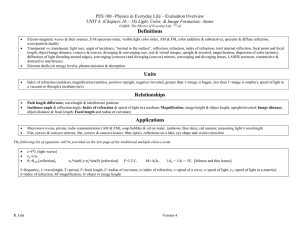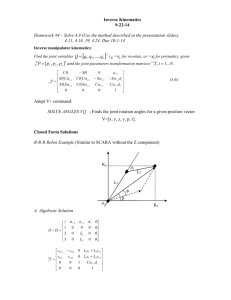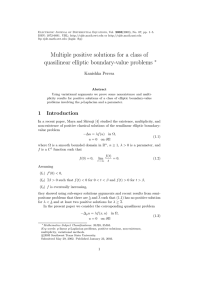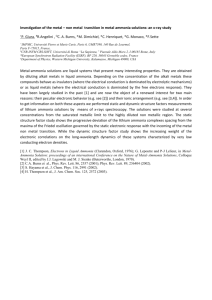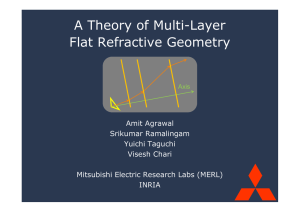• Analytical refraction solutions Class 3: Refraction Traveltime Interpretation
advertisement
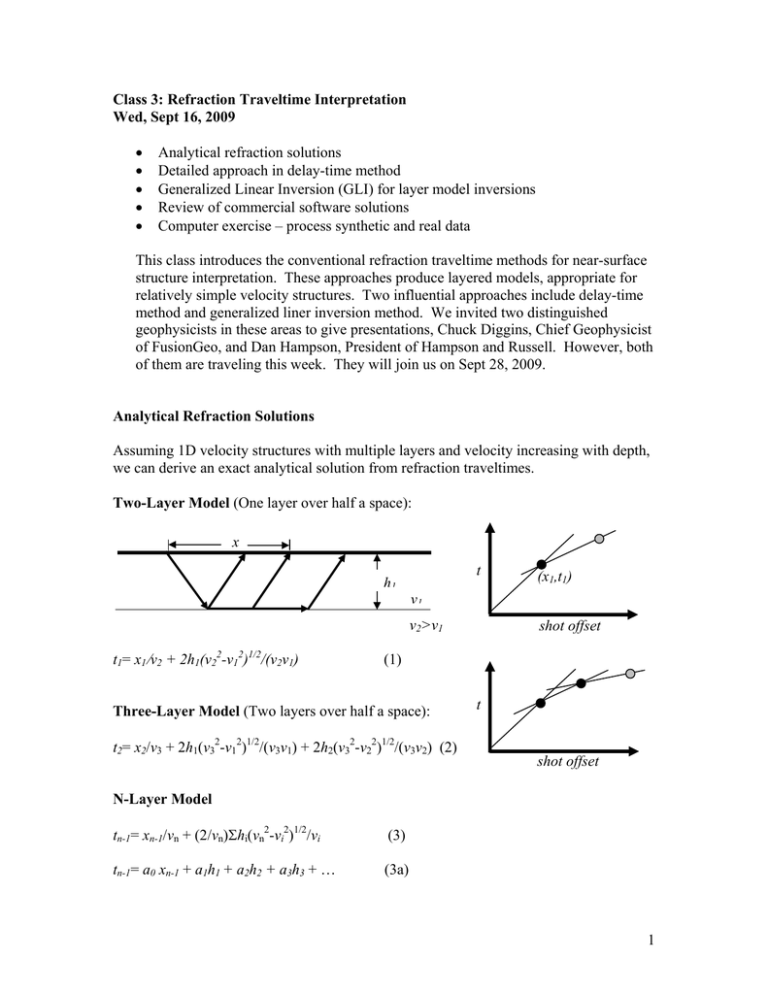
Class 3: Refraction Traveltime Interpretation Wed, Sept 16, 2009 • • • • • Analytical refraction solutions Detailed approach in delay-time method Generalized Linear Inversion (GLI) for layer model inversions Review of commercial software solutions Computer exercise – process synthetic and real data This class introduces the conventional refraction traveltime methods for near-surface structure interpretation. These approaches produce layered models, appropriate for relatively simple velocity structures. Two influential approaches include delay-time method and generalized liner inversion method. We invited two distinguished geophysicists in these areas to give presentations, Chuck Diggins, Chief Geophysicist of FusionGeo, and Dan Hampson, President of Hampson and Russell. However, both of them are traveling this week. They will join us on Sept 28, 2009. Analytical Refraction Solutions Assuming 1D velocity structures with multiple layers and velocity increasing with depth, we can derive an exact analytical solution from refraction traveltimes. Two-Layer Model (One layer over half a space): x t h1 (x1,t1) v1 v2>v1 t1= x1/v2 + 2h1(v22-v12)1/2/(v2v1) shot offset (1) Three-Layer Model (Two layers over half a space): t2= x2/v3 + 2h1(v32-v12)1/2/(v3v1) + 2h2(v32-v22)1/2/(v3v2) (2) t shot offset N-Layer Model tn-1= xn-1/vn + (2/vn)Σhi(vn2-vi2)1/2/vi (3) tn-1= a0 xn-1 + a1h1 + a2h2 + a3h3 + … (3a) 1 Notes: • • • • • Other analytical solutions – multiple dipping interfaces All analytical solutions _ assume velocity increasing with depth Hidden layers – refraction methods fail Any other structures – no analytical solutions, need to be derived otherwise All approaches are under some assumptions Delay-Time Method Map irregular refractor interfaces E G hG V1 A B V2 C D Total delay time for source and receiver: TEG = TE + TG (1) Delay-time at G: TG = CG/v1 – CD/v2 = hG ((v22-v12)1/2 /(v1v2) ) (2) y x EF G ER Derive reliable v2 when the interface varies: tEFG – tERG = TEF – TER + 2x/v2 – y/v2 (3) Questions: what are the assumptions behind the delay-time method? 2 Generalized Linear Inversion (GLI) for Layer Models By Hampson and Russell (1984) D0(x) V0 D1(x) V1(x) D2(x) V2(x) V3(x) Objective: given traveltimes observed at the surface, invert layer depths Di(x), and velocity Vi(x) Model: Data: M=(m1, m2, m3 …, mm) T=(t1, t2, t3, …, tn) (thickness and slowness) (direct-wave and refraction arrivals) Physics: ti=Aj(m1, m2, m3 …, mm), i=1,2,3, … n. Given a velocity model and geometry, generate traveltimes of rays Inverse Problem: BΔM=ΔT Bij=∂ti/∂mj 2 Objective Function: ψ = ⎜⎜T – A(m)⎜⎜ T -1 T Model Update: ΔM=(B B) B ΔT M=M+ΔM A more sophisticated inversion scheme: Objective Function: ψ = ||T – A(m)||2 + τ ||L(m)||2 Solving an inverse problem: (BTB +τLTL)ΔM=BT ΔT - τLTL(M) 3 Commercial Software Packages: Delay-Time Solutions: Fathom: Seismic Studio: TomoPlus: Green Mountain Geophysics (ION), Denver, CO FusionGeo, Houston, Texas GeoTomo, Houston, Texas Generalized Linear Inversion: GLI3D: Hampson-Russell, Calgary, Canada 4 MIT OpenCourseWare http://ocw.mit.edu 12.571 Near-Surface Geophysical Imaging� Fall 2009 For information about citing these materials or our Terms of Use, visit: http://ocw.mit.edu/terms.

